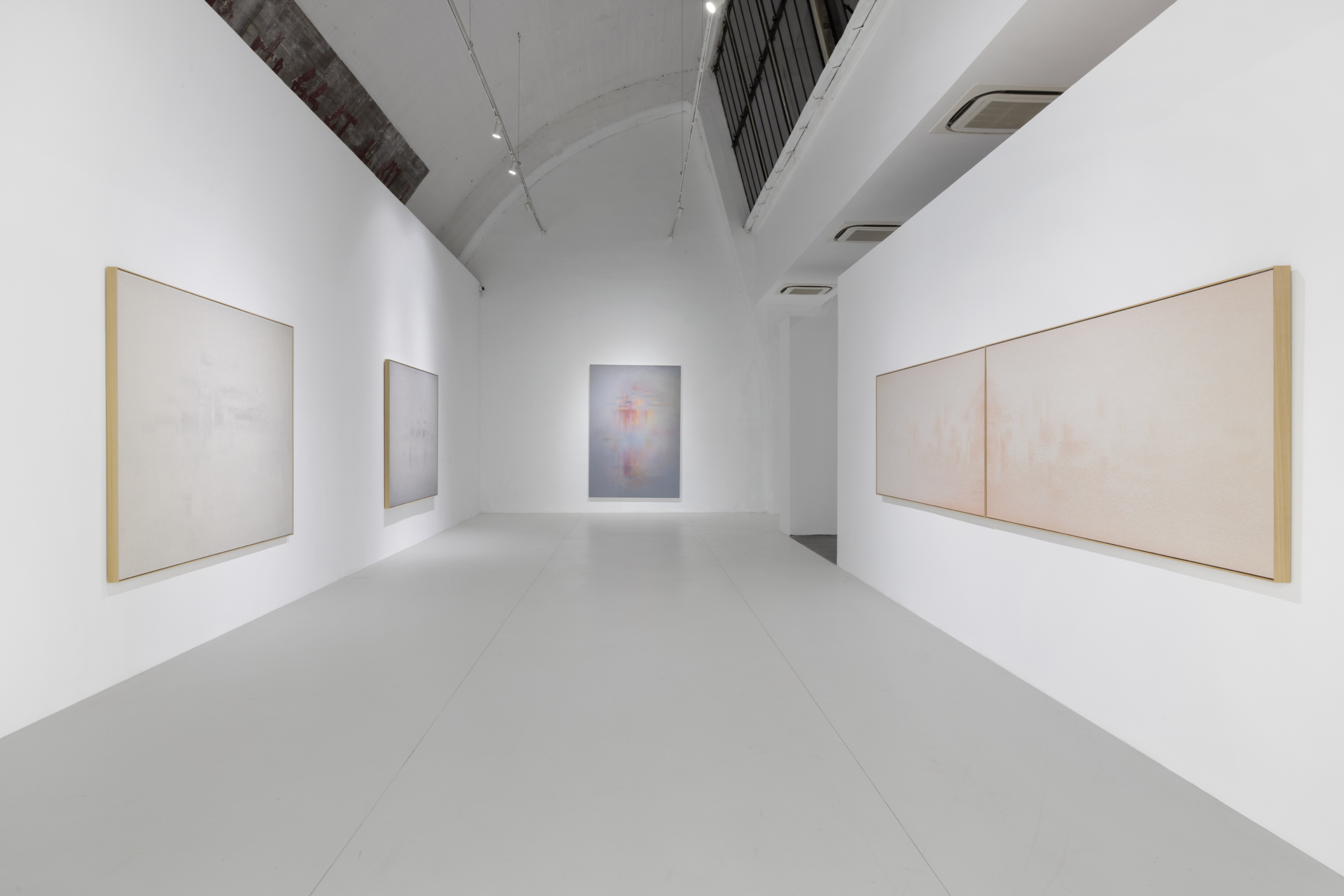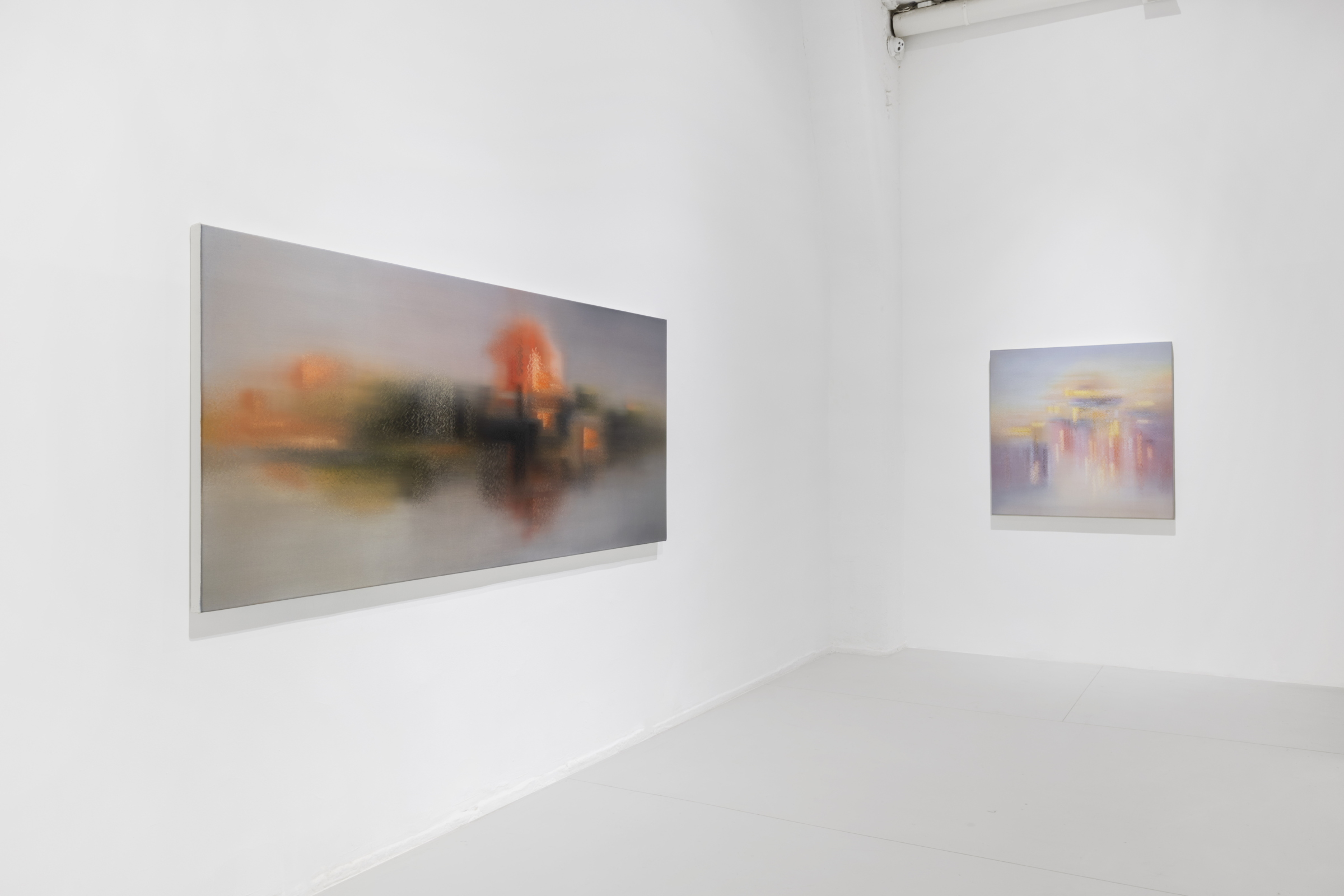Tokyo Gallery + BTAP is pleased to announce the opening of Wang Shuye's solo exhibition, Obscurity and Un-shielding, on September 15th.
Born in 1963 in Qiqihar, Heilongjiang Province, Wang Shuye graduated from the Central Academy of Arts and Crafts (now Tsinghua University Academy of Fine Arts) in 1989. The following year, he moved to Japan, studying philosophy, religious studies, and visual arts without producing any works in the next decade. During this period, he developed an original artistic methodology based on his reflections on modernity; Wang proposed "undifferentiated viewing" (i.e., non-cognitive visuality) and explored "non-objective relationship with the world"; his works adopt new ways of representing the physical world, that abolishes the recognition of objects to reveal the non-objectified dimension of perception that has been obscured by the objectified worldview from the usual humanistic perspective, thereby revealing the self-contained and self-sufficient world within such perceptual dimension.
The works in this exhibition are inspired by the subject of the Forbidden City. Being an iconic Chinese architecture, the Forbidden City is also where Wang Shuye imagined the world in the past and present during his studies in the 1980s. In front of the Meridian Gate and outside of the palace walls, Wang left footsteps while searching for the depths of his spirit. The works presented in the exhibition extend from the artist's willingness to look deeper into the world's interior from that time to explore the possibilities of the perception of the present. The exhibition title, “Obscurity and Un-shielding," in which the former suggests a pre-cognitive perception that naturally relies on perception without visual recognition, while the latter points to the limitation in perceptions that transcend the everyday, thereby opening the instinctive sensibilities that would directly reach the world and the possibilities of the essence of being. Applying such a perceptual approach, one wouldn't have to look up the stars, but being inside the room nevertheless allows one to understand the world as it is. It is possible to perceive the entirety of our being, which is boundless, while the artist translates his immediate surroundings into "representations of pre-cognitive perception." This common approach has thus become the way by which Wang emphasizes the subversion and reverse supplementation of the usual cognitive perceptions.
Wang Shuye's practice revolves around his original approach of "perceptual un-shielding," primarily grounded on his reflection of real people and their relationships with the world. In daily life, people are often confined to essentialist and egoistic perceptions. Should the direction of civilization excessively skew towards humanistic aspirations, it would undoubtedly be dangerous, causing anxiety and restless to people; in Wang Shuye’s view, “The value of art is not only its capacity for human expressions but in its ability to open up the possibilities for humans to transcend the limitations of their perceptions." By eliminating cognitive perception to reset and transcend the objectified worldview, the renewed self would integrate into the world and the eternal infinity of being. Such a way of being would embody the ultimate lyricism, affirmation, and liberation.
This exhibition will be on view until November 9th. We look forward to your visit.
Wang Shuye
Wang Shuye was born in China’s Heilongjiang province in 1963, and graduated from Beijing’s Central Academy of Craft Art (now renamed the Academy of Arts & Design of Tsinghua University) in 1989. That same year, his graduation work won the Gold National Award for Excellence, the highest honor awarded by the Ministry for Trade, Education and Industry. In 1990, Wang came to Japan and spent the next ten years devoting himself exclusively to the spiritual pursuit of art, exhibiting no work until his 2001 solo show in Kamakura. Since then he has been showing his paintings mainly in Tokyo and Kamakura, in addition to holding a retrospective exhibition at the Ikeda Museum of 20th Century Art in 2009 entitled The Affirmative Vision – The World of Wang Shuye. Wang took a leading role in organizing Neo-Moroism exhibition held at Tokyo Gallery + BTAP (Beijing) in 2013 by contribuiting a theoritical essay for the catalogue. Today, Wang continues to live and work in Kamakura, producing paintings that are informed by subtle yet tenacious executation and persistent spirit of inquiry.
Wang’s paintings, often covered by a mass of countless brushstrokes, use this layered technique to depict profound scenes of tranquil beauty. These visual spaces represent a world that exists prior to becoming a subject of our awareness. Standing in front of these large canvases, the viewer is freed from the constraints of the present moment and discovers the existence of another, more mercurial space and time. Although he used to work mainly with Chinese ink and pencil, Wang began using oil paint in 2007 in order to explore new directions in his artistic practice. By giving up his reliance on outlines and contours, Wang has enabled his vision to draw ever closer to his chosen subjects – so much so that he seems to approach the very essence of their materiality.




